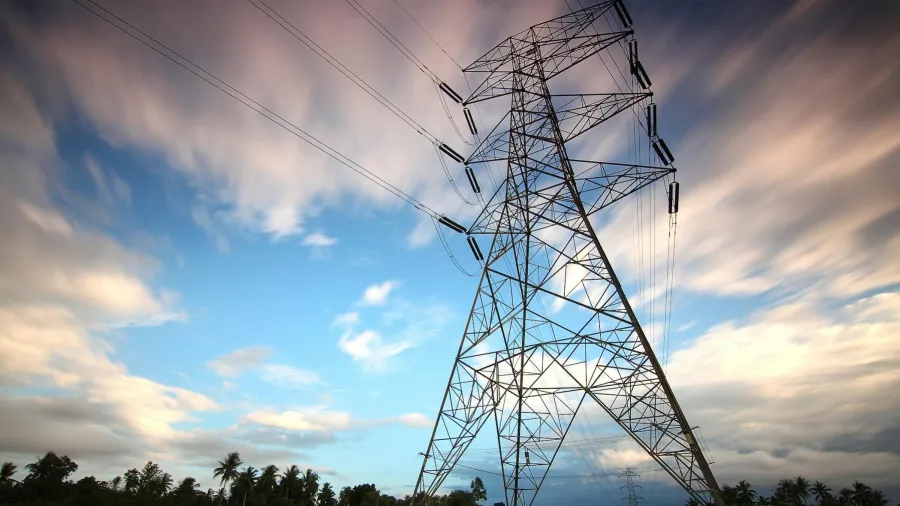
Why Singapore could be the ‘tipping point’ for ASEAN renewable and grid development
Heavily reliant on gas, the country is still on track for its 2035 net-zero target, but could be more ambitious to hit its 2050 goal by 2045.
TALKS about regional grid interconnection amongst Southeast Asian markets have gone on since the late 1990s but progress remains limited. For Singapore, this is a crucial component for its energy transition as power imports would be its only solution due to geographical constraints.
As such, the country could play a vital role in driving renewable energy (RE) and grid interconnection in the region.
Under the 2030 Green Plan, Singapore aims to raise the share of renewable generation in its energy mix to 40% by 2035.
“Singapore is poised for a massive renewables transformation in Southeast Asia because they will be driving the demand in the next years,” Dinita Setyawati, senior electricity policy analyst for South East Asia at energy think tank Ember, told Asian Power.
“Singapore could help shutter or cancel some of Southeast Asia’s fossil capacity by driving the neighbouring countries to invest and collaborate in renewable projects. Singapore could be the tipping point for renewables in Southeast Asia,” Setyawati added.
Ember also stated that the country “is well-placed to spearhead” the regional effort to drive the around $200b needed upgrade for the region’s grid infrastructure. Setyawati added that Singapore would need to invest over $55b to sponsor renewable energy projects in Vietnam or Indonesia to drive clean energy growth and diversify its resources.
The report also added that Singapore has to double its renewable imports to accelerate its net-zero goals. This will also contribute to reducing electricity costs, according to Ember, noting that solar could be as low as 13.5 US cents (SG$0.18) per kilowatt-hour, compared to the electricity tariff of 22.4 US cents/kWh (SG$0.30), and domestic production of 19.4 US cents/kWh (SG$0.26).
What is the current energy landscape of Singapore?
Singapore’s electricity sector partly relies on gas generation. About 90% of its demand is met by gas. Over time, oil has been replaced by gas. However, power sector emissions increased because of the growth in demand. Solar was recently introduced, but it only made up around 2% of the 2023 electricity demand. Biomass, including waste-to-energy, has also been stable in the past years. I have not seen any plans for the Singapore government to increase its biomass capacity.
Given the geographical constraints in Singapore, how vital are regional interconnection and RE imports in driving energy transition?
Currently, imports only meet about 0.2% of electricity demand in Singapore. However, Singapore needs interconnection and new renewable imports because of this lack of renewable energy resources, especially if they plan to reach 40% renewables by 2035 in accordance with the Singapore Green Plan 2030. So to decarbonise its power sector, further regional interconnection or new local energy imports are the primary sources for Singapore to be able to achieve the target.
What is the state of grid interconnection in the region? Specific to Singapore, which neighbouring markets contribute to its RE market?
The ASEAN Power Grid is quite an interesting case because there have been discussions about establishing a regional connection since the 1990s. Currently, there are very limited connections. Singapore is the first country to apply cross-border trading from Laos through the Laos-Thailand-Malaysia-Singapore Power Integration Project. Currently, there are some connections between Vietnam, Laos, Cambodia, and also Malaysia, Sarawak, and Indonesia. Most of these interconnections are happening bilaterally. There are also some connections between Malaysia and Singapore.
The Philippines, on the other hand, does not have connections with any neighbouring countries in Southeast Asia. Undersea connections are still quite challenging for these countries, especially regarding Australia’s plan to export solar energy to Singapore as it would need some time to finalise that because it will pass through several countries, including Indonesia. Investment requirements are also quite high.
We understand that the regional grid interconnection will be beneficial for countries like Singapore.
Given the country’s economic standing, what will be its role in boosting regional power interconnection?
Singapore is poised for a massive renewables transformation in Southeast Asia because they will be driving the demand in the next years. They currently have an opening for bidding for a renewable import from neighbouring countries. Singapore could help shutter or cancel some of Southeast Asia's fossil capacity by driving the neighbouring countries to invest and collaborate in renewable projects. Singapore could be the tipping point for renewables in Southeast Asia.
What actions or policies should Singapore introduce to drive its renewables growth?
Singapore has its Green Energy Plan for 2030, but the ambition could be raised. Based on the Ember report, we say that Singapore should double its ambition to 8.1 gigawatts (GW) by 2035 and 14 GW to 16 GW by 2045. Singapore has also done a great job in investing in research and development but more investment in research development would give Singapore more options to improve renewable energy capacity.
The diversification of renewable energy resources has been done by Singapore, as it is currently doing a feasibility study on geothermal. I’m not sure about offshore wind, but increasing the capacity factor for solar would be able to maximise the country’s renewables. The country has a very limited solar potential, which is only 8.6 GW, but if they have a capacity factor of 30%, for example. By next year, it will contribute significantly to the electricity generation.
What are the main challenges in driving the regional interconnection and importation of renewable energy to Singapore?
The first challenge will be the investment costs for the grid system. How can we make good investments profitable? How can we drive investors to invest in grid connections and make sure that they contribute to this whole climate goal and your renewable energy exchange? This is something that the government needs to address which brings me to the second challenge. Governments’ commitments make the private sector hesitant to invest in infrastructure facilities. In other words, there needs to be harmonised institutional arrangements for facilitating the private sector involvement in regional interconnections.
There’s also the nature of renewable energy itself. For example, hydropower from Laos to Singapore will be decreased during the dry season. The renewable energy market in Southeast Asia needs to mature, particularly the solar and wind markets, to ensure an effective trading of renewable energy. Last but not least, there will be some geopolitical challenges in terms of the sovereignty and dispute resolution mechanism. If a conflict occurs, there should be some mechanism to address this dispute.
Given the pace of adoption of renewable energy in Singapore, how feasible do you think it is for Singapore to reach its 2030 targets?
Singapore is actually on track, to reach their net-zero target by 2050, by importing up to 4.2 GW by 2035. But if Singapore wants to further accelerate its net-zero target by 2045, then it needs to raise its ambitions. Championing interconnection will bring benefits to Singapore, particularly economic benefits. There will be some savings in peak capacity if the electricity is traded during the peak hours, for example, between Malaysia and Singapore, and it will bring more security of supply and reduce the uncertainty of renewables because of the diversifications and the allocations of renewables that are already there.



















 Advertise
Advertise






